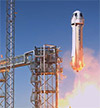Critical Site Selection Factor #2: Highway Accessibility
It is, of course, no coincidence that nearly all of the nation’s biggest manufacturing facilities and distribution centers can be found alongside major highways.
Q4 2016
As a location factor, highway accessibly “can be critically important. Highway accessibility is kind of a must-have,” says Richard H. Thompson, international director, Supply Chain & Logistics Solutions for JLL. “It has always been important not to have to deadhead it too many miles off a major expressway.”
It’s certainly not hard to understand why. Every extra mile off the highway that a truck must travel adds to the freight cost and the shipping time, and when you multiply that extra cost by the many trucks that may come and go from a facility every day, the added costs grow considerably. That said, the impact on the overall cost of a product depends on the relative level of freight costs, and those costs have been on a downward trend, or at least running fairly flat.
“Freight costs have been pretty stable and trucking capacity has been available over the last 24 months,” says Thompson — and that suggests that site planners and operators aren’t losing as much sleep over highway accessibility right now as they sometimes do.
Trucking companies may start to focus on companies that are easier to serve, so being easily accessible is going to be more important. Richard H. Thompson, international director, Supply Chain & Logistics Solutions for JLL The question is, will the current situation hold? Thompson doesn’t think so. “I would see this becoming more important as the economy grows and capacity gets tighter, which is expected toward the end of 2017,” he says. Indeed, many forecasts predict an upward trend in prices as 2017 moves ahead. Just as concerning, Thompson says, is that tighter capacity will allow trucking companies to get a bit choosier about which jobs they take, and that puts the importance of highway accessibility into a somewhat different spotlight. “Trucking companies may start to focus on companies that are easier to serve, so being easily accessible is going to be more important.”
Road Construction
When evaluating highway access, people tend to think of interstate highways as the gold standard, which is a reasonable perspective. After all, they allow transportation at the most fuel-efficient speeds, with the fewest slowdowns and interruptions. Nevertheless, “we’re getting a lot of road construction where non-interstate highways are being built to interstate standards,” observes Christopher D. Lloyd, senior vice president, Infrastructure and Economic Development, at McGuireWoods Consulting LLC. Rather than thinking just in terms of distance to interstate, he says, it’s worth considering distance to parkways as a reasonable measure.
Of course, the importance of highway accessibility varies considerably by project. It’s particularly vital for distribution centers and manufacturing facilities. As Lloyd notes, “Highway access is very important to projects that require an input and have some sort of output.”
Tech-oriented operations may be less concerned about highway access, says Gene DePrez, managing partner, Global Innovation Partners Ltd. DePrez does a fair amount of work in sectors other than manufacturing and distribution. For tech companies operating in a global environment, he says, “It’s moving people, not just things.” In that case, highway accessibility as a critical factor may give way to accessibility to air travel and passenger rail.
On the other hand, says Lloyd, “Even if you’re a technology company, where is the fiber usually buried? In the highway right-of-way or rail right-of-way. If you’re really removed from a highway or railroad, you’re probably not covered,” he points out. It’s an entirely different reason to locate near a highway — to plug into the fiber that’s buried along the asphalt. “They’re not as disassociated from each other as you might think. You can think, ‘Oh, I can operate anywhere.’ No, you can’t.”
Project Announcements
SLB Expands Shreveport, Louisiana, Operations
12/18/2025
Eastover Chips Plans Eastover, South Carolina, Wood Chipping Operations
12/18/2025
Eli Lilly and Company Plans Huntsville, Alabama, Manufacturing Operations
12/18/2025
Eccalon Plans Detroit, Michigan, Headquarters Operations
12/18/2025
AECI Utility Solutions Plans Boonville, Missouri, Distribution Operations
12/18/2025
DrinkPak Plans Philadelphia, Pennsylvania, Manufacturing Operations
12/18/2025
Most Read
-
The Workforce Bottleneck in America’s Manufacturing Revival
Q4 2025
-
Rethinking Local Governments Through Consolidation and Choice
Q3 2025
-
Lead with Facts, Land the Deal
Q3 2025
-
Investors Seek Shelter in Food-Focused Real Estate
Q3 2025
-
America’s Aerospace Reboot
Q3 2025
-
The Permit Puzzle and the Path to Groundbreaking
Q3 2025
-
Supply Chain Whiplash Reshapes CRE
Q3 2025



